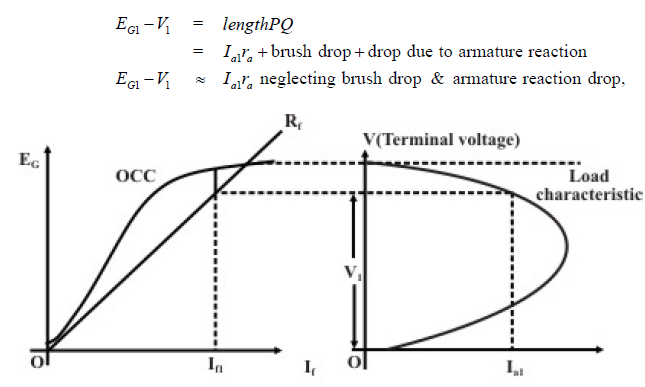Load Characteristic Of Shunt Generator
Load characteristic of shunt generator: With switch S in open condition, the generator is practically under no load condition as field current is pretty small. The voltmeter reading will be Eo . In other words, Eo and Ia = 0 is the first point in the load characteristic. To load the machine S is closed and the load resistances decreased so that it delivers load current IL. Unlike separately
excited motor, here IL ≠ Ia. In fact, for shunt generator, Ia = IL - If. So increase of IL will mean increase of Ia as well. The drop in the terminal voltage will be caused by the usual Iara drop, brush voltage drop and armature reaction effect. Apart from these, in shunt generator, as terminal voltage decreases, field current hence φ also decreases causing additional drop in terminal voltage. Remember in shunt generator, field current is decided by the terminal voltage by virtue of its parallel connection with the armature. Figure (A) shows the plot of terminal voltage versus armature current which is called the load characteristic. One can of course translate the V versus Ia characteristic into V versus IL characteristic by subtracting the correct value of the field current from the armature current. For example, suppose the machine is loaded such that terminal voltage becomes V1 and the armature current is Ia1. The field current at this load can be read from the field resistance line corresponding to the existing voltage V1 across the field as shown in figure (A). Suppose If1 is the noted field current. Therefore, ILl = Ia1- If1.Thus the point [Ia1, V1] is translated into [ILl, V1] point. Repeating these step for all the points we can get the V versus IL characteristic as well. It is interesting to note that the generated voltage at this loading is EG1 (obtained from OCC corresponding to If1). Therefore the length PQ must represents sum of all the voltage drops that has taken place in the armature when it delivers Ia.

fig.(A)load characterstics of shunt generator